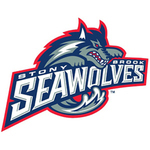University of Oklahoma
Profile
Size
10 / 10Cost
6 / 10Selectivity
2 / 10-
Team Conference
MCLA Div. 1
-
College Type
4-year, Public
-
Campus Type

Suburb: Midsize
Student Body
Gender
- Male
- Female
Enrollment
- Full Time
- Part Time
Geography
- In-State
- Out-of-state
- Foreign
- Other
Ethnicity
- White
- Black
- Asian
- Latino
- Foreign
- Other
Other includes American Indian, Native Alaskan, Native Hawaiian or other Pacific Islander, two or more races and unknown race / ethnicity.
Coach Recruiting Interview
I got the opportunity to talk on the phone with the head coach of the Oklahoma Sooners lacrosse team, Brendan Klein, and he gave me some great insight on the MCLA as well as his growing program. The Sooners play in the LSA, and have been improving every year under 2nd year coach Klein. Klein believes he has the best recruiting class in program history coming in 2015 as the Sooners are looking for young players to buy in to their program.
What advice do you have for players interested in MCLA programs?
Biggest advice I would give is pick school for academics first. You see when kids decide between D3 schools that they are sometimes limited with liberal arts schools. The MCLA offers the opportunity of a lacrosse career and paying the bills after you graduate. Choose the school you want and choose your lacrosse team as a 2nd part of your college experience. MCLA programs are on the rise. When we talk to recruits we are honest with kids about the program we want to run. We want players to buy in to the program.
What is the best way for players to get on your recruiting radar?
The best way that we go about recruiting student-athletes is by talking to students on a one on one basis that have an interest in lacrosse. Players can find out about our team through our online presence and I want recruits to reach out to us as well. The more info players get the more they are able to respond effectively. Any resource like ConnectLAX that gives players more info gives us help.
What type of player’s do you primarily look for, a raw athlete or refined lacrosse player?
We look for a good mix of all of them really. There is a role for just about everybody. The number one thing that factors for what we do is commitment and willingness to play a certain style. Attitutde is more important than any physical attributes. There is room for anyone as long as the attitude is there.
I want guys who want to go to OU first of all. As our profile grows , we are able to reach out more nationally as an up and coming program. A lot of the dallas TX area lacrosse is growing and it hits the right marks. It has been really cool to see the game grow.
What areas of player development would you recommend players to focus on?
Fundamentals. Throwing and catching. Doing everything the right way. If you have those things mastered you can move on to bigger and better concepts. We make sure everyone is on the same level of proficiency. I’m big on hammering in fundamentals. It will give us a big advantage. Hit the wall and make sure you’re doing everything correctly with mechanics. Fundamentals at this level could be the difference maker.
What type of student-athletes finds MCLA programs to be the best fit for them?
Every type of student athlete. Guys who can go D1, good for them. But I think the MCLA at the right program can be a good fit for even the best lacrosse players. Potential d3 guys that are looking for a larger school.
How does the camaraderie of MCLA teams match that of NCAA lacrosse teams?
The bond and camaraderie matches that of D3 and D2 lacrosse. To find that camaraderie in the MCLA, if you have a program with clear-defined goals and every player is working for the same goal, that’s where you find success. Navy Seals gave us a week long training and made us pay attention to detail and helped us with team chemistry. It has had a huge play on team success.
Team Road Trips
The Sooners travel all around the South to a number of big schools like University of Alabama, Auburn University, Texas Christian University, Southern Methodist University, University of Arkansas, and University of Kansas. They also have traveled eat to Virginia and Washington DC to take on Liberty University and George Washington University.
Recruit Commits
2023 | |||
Hometown |
Position(s) | ||
| Mason Cincotta |

|
Garden City, NY | Def |
2016 | |||
Hometown |
Position(s) | ||
| Brooks Lescher | Lucas, TX | Def, LSM | |
Location
Team Videos
Where Grads Live
- Oklahoma City Oklahoma Area
- Dallas/Fort Worth Area
- Tulsa Oklahoma Area
- Houston Texas Area
- Washington D.C. Metro Area
- Greater Denver Area
- Austin Texas Area
- Greater Los Angeles Area
- Greater New York City Area
- San Francisco Bay Area
- Greater Chicago Area
- Greater Atlanta Area
- Kansas City Missouri Area
- Greater Seattle Area
- San Antonio Texas Area
Where Grads Work
- United States Air Force
- US Army
- Chesapeake Energy
- US Navy
- Devon Energy
- AT&T
- Dell
- ConocoPhillips
- IBM
- Hewlett-Packard
- Halliburton
- Boeing
- University of Oklahoma Health Sciences Center
- Federal Aviation Administration - FAA
- BP
What Grads Do
- Operations
- Sales
- Education
- Entrepreneurship
- Engineering
- Information Technology
- Media and Communication
- Research
- Healthcare Services
- Consulting
- Program and Project Management
- Finance
- Marketing
- Human Resources
- Arts and Design
Niche Grades
Overall Experience

Student Life

Professor Rating

Academics

Athletics

Campus

Academics
Test Scores
This range represents the middle half of incoming freshman from the 25th to 75th percentile. The writing component is now optional and no longer reported.
This distribution represents incoming freshman test scores and GPA on 4.0 scale.
Admissions
Total |
Male | Female | |
| Applicants | 15,673 | 6,927 | 8,746 |
| % Admitted | 80% | 81% | 80% |
| % Admits That Enroll | 36% | 38% | 35% |
| Incoming Freshman Average GPA | 3.62 |
Admission Considerations
Required | Rec. | |
|---|---|---|
| High School GPA | ||
| High School Rank | ||
| High School Transcript | ||
| College Prep Classes | ||
| Recommendations | ||
| Demonstrate Competencies | ||
| Admission Test Scores | ||
| Other Tests (Wonderlic, etc.) | ||
| TOEFL (English proficiency) |
Majors / Programs
Degrees offered by popularity. Type = Bachelor.
Financial
Net Price
Average net price = sticker price - financial aid.
$21,804
Average net price by income for incoming freshman receiving financial aid.
Net price for students paying in-state tuition rate (public institutions).
Sticker Price
Sticker price = estimated total cost of attendance.
In-state | Out-of-state | |
On Campus | ||
| Tuition & Fees | $11,763 | $25,203 |
| Books & Supplies | $667 | $667 |
| Cost of Living | $10,994 | $10,994 |
| Personal Expenses | $6,317 | $6,317 |
| Sticker Price | $29,741 | $41,630 |
Personal expenses includes laundry, transportation, entertainment and furnishings.
Financial Aid
96% of full-time, incoming freshman receive financial aid.
Receiving Aid % | Avg. Aid Amount | |
Type of Aid | ||
| Grant or Scholarship | 89% | $8,897 |
| Federal Grants | 24% | $4,944 |
| Pell Grants | 24% | $4,758 |
| Other Federal | 3% | $1,745 |
| State & Local Grants | 22% | $4,564 |
| Institutional Grants | 86% | $6,662 |
| Student Loans | 45% | $8,561 |
| Federal Loans | 43% | $5,348 |
| Other Loans | 12% | $12,718 |
All financials shown for full-time, incoming freshman.
Total Amount | Per Student | |
Endowment | ||
| Financial Assets | $63.9 Million | $2,238 |
Value of endowment assets at fiscal year end.
Debt
Total federal debt after graduation for undergrad borrowers: $20,000.
Total cumulative student debt by percentile.
Total Principal | Monthly Payment | |
| 10 Year Repayment | $15,000 | $213 |
Most student loans have a grace period before repayment begins.
3 Year Avg. Default Rate: 4.7%
Avg. rate for colleges with lacrosse is 5.1%.
Total federal debt excludes private student loans and parent PLUS loans. Cumulative debt cohort includes 7,600 students.
Salary
Earnings 10 years after enrollment: $51,100
Earnings of former students working by percentile.
Earnings of former students who received federal financial aid. Figures shown are median.
Payback
How long until this college investment pays off: 4.86 years.
Median debt and foregone earnings divided by median earnings. Foregone earnings assumes 4 years to graduation; at this school, 44% of students graduate on time.
Team Social
Campus Safety
On Campus |
In Res. Halls |
|
|---|---|---|
Criminal Offenses |
||
| Murder | - | - |
| Negligent Manslaughter | - | - |
| Rape | 12 | 12 |
| Fondling | 7 | 6 |
| Incest | - | - |
| Statutory Rape | - | - |
| Robbery | 1 | 1 |
| Aggravated Assault | 2 | 2 |
| Burglary | 7 | 6 |
| Motor Vehicle Theft | 9 | 6 |
| Arson | - | - |
In Residence Halls are a subset of On Campus statistics. Murder includes non-negligent manslaughter.
The crime data reported by the institutions have not been subjected to independent verification by the U.S. Department of Education. Therefore, the Department cannot vouch for the accuracy of the data reported here. Statistics represent 3-year average data.
Data from The National Center for Education Statistics (NCES), the primary federal entity for collecting and analyzing data related to education.
Carnegie Classifications
Category |
Classification |
|---|---|
| Basic Classification | Doctoral Universities: Highest Research Activity |
| Undergrad Instruction | Balanced arts & sciences/professions, high graduate coexistence |
| Graduate Instruction | Research Doctoral: Comprehensive programs, no medical/veterinary school |
| Enrollment Profile | High undergraduate |
| Undergrad Profile | Four-year, full-time, more selective, lower transfer-in |
| Size and Setting | Four-year, large, primarily residential |
Carnegie classifications provide a framework for evaluating comparable schools.
Similar Academic Schools
-

-

-

-

-

-

-

-

-

-

-

-

-

-

-

-

-

-

-

-

 See more college grades
See more college grades Free ACT and SAT test prep
Free ACT and SAT test prep Free SAT test prep
Free SAT test prep Net price calculator
Net price calculator Free scholarship search
Free scholarship search